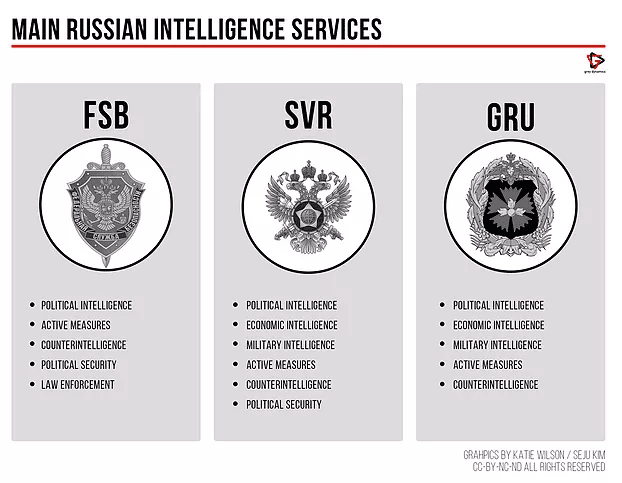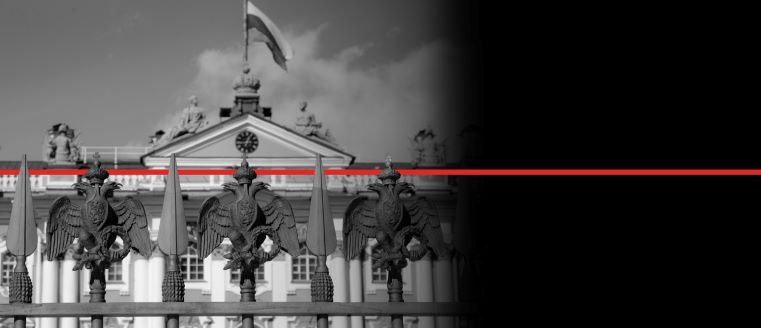The poisoning of Sergei and Yulia Skripal with a Novichok nerve agent brings Russia to the fore of Western politics. The ‘Fusion Doctrine’ announced by Theresa May will allow the UK to utilise more resources to counter Russian aggression. It has reignited interest in the concept of Russian ‘hybrid warfare’ and its “Hybrid Threat” among the intelligence community.
The Russian intelligence services remain secretive. This is despite the insights and documents revealed by defectors such as Vasili Mitrokhin and Oleg Gordievsky. As well as the controlled release of sensitive information after the collapse of the USSR. Therefore, it is unsurprising that Western intelligence practitioners must understand them. Whether Russia follows a consistent strategy when conducting its foreign intelligence operations is a question that remains open. In February 2013, the chief of the Russian General Staff, General Valery Gerasimov, published an article. This gave the perspective of a senior military leader on the future of war. This piece was not remarkable in the West after its publication. Nonetheless, practitioners have heavily scrutinised in the wake of the 2014 Russian intervention operation in Ukraine.
Gerasimov remarks, “The very ‘rules of war’ have changed, “. This suggests that non-military means have become more critical than weaponry when conducting military operations. Gerasimov highlights Russia’s importance in the information sphere. He uses political, diplomatic, and other measures to win wars. He urges to create greater cooperation between the Russian military, intelligence agencies, and the Academy of Military Sciences. This article has become the focus of recent Western efforts to understand Russian military and intelligence strategy. It leads to a hybrid warfare theory in which actors combine conventional and unconventional warfare. This has become the principal term by which Western theorists discuss Russian intelligence. Politicians suggest that Russia’s current strategy in its foreign intervention operations is frighteningly new and unpredictable.
Despite its recent popularity, the concept of ‘hybrid warfare’ is unhelpful, mainly when applied to Russian intelligence strategy. It was a term that Frank Hoffman coined in 2009. He did not mention Russia when describing his theory, perceiving no uniqueness in a Russian incarnation of the strategy. Furthermore, intelligence scholars Michael Kofman and Matthew Rojansky have pointed to the term’s imprecision. They state it is simply a new word to define a combination of previously described types of warfare. Theorists and practitioners use it to make sense of the 2014 Ukrainian security crisis. Most importantly, notions of a Russian strategy of ‘hybrid warfare’ assume that Russian actions in Ukraine are unprecedented and unpredictable. A coherent Western understanding of Russian intelligence strategy during foreign intervention operations remains elusive.
There are notable similarities in how intelligence agencies have conducted themselves since the 20th century and beyond. A Russian ‘hybrid threat’ is, therefore, nothing new. Russia used ‘dezinformatsiya’ (disinformation) to promote the Russian state before this new buzzword existed.
Before the second Chechen invasion, the Kremlin used a Russian Information Centre, which released videos of Chechens killing Russian soldiers in the First Chechen War, as a tool to denounce Chechen separatists as terrorists to legitimise another intervention. This use of the newly established internet easily parallels Russian use of social media during the Ukrainian conflict and in influencing the US 2016 election. The covert nature of recent influence campaigns is traceable to the KGB’s use of ‘front organisations’ such as the World Peace Council during the Cold War to undermine Western narratives and willingness to invest in defence. ‘Hybrid’ warfare is thus far from a new doctrine.

This remarkable consistency in Russian strategy can be explained. Gerasimov states that “In the twenty-first century, we have seen a tendency towards blurring the lines between the states of war and peace”, thereby linking hybrid warfare doctrine to Russian activities. This mentality is undeniably held by Russian intelligence practitioners, who have consistently made use of the information and political spheres, as well as non-combatants. However, far from being the new phenomenon suggested by some theorists, this has formed an underlying factor in the consistency of Russian intelligence strategy since the Tsarist period.
Russia has traditionally viewed war similarly to Carl von Clausewitz, who wrote in the early 1800s that “War is not merely a political act, but also a real political instrument”. Indeed, Russia has consistently lacked a delineation between war and peace and has instead seen itself as under constant hybrid threat from its neighbouring states, most recently NATO and the EU, as reflected in the 2014 Military Doctrine, which details fourteen significant risks to the Russian Federation, each a thinly veiled criticism of Western expansionism. Therefore, rather than being seen as a new, threatening and ‘hybrid threat’, the Russian intelligence services’ eagerness to use non-state actors and the information sphere should be viewed as symptomatic of a deeper intelligence culture that has consistently informed its strategy during foreign intervention operations.
It is also worth noting the extent to which the modern intelligence services base their culture and doctrine upon that of their predecessors. The KGB was officially dissolved on 31 December 1991. An act heralded as signalling impending oversight of the intelligence activities of the Kremlin. However, due to the volatile political environment of the post-Soviet state, Yeltsin relied upon the security services to stay in power, leading to a dependence on former KGB personnel. Thus, the five new agencies which were formed from the KGB directorates were headed by ex-KGB staff. This has important ramifications for the consistency of a Russian intelligence strategy since continuity in methodology came with the continuation of personnel in the Russian security services. Putin’s assertion that “There is no such thing as an ex-KGB man” suddenly takes on a more sinister meaning.
Thus, the attempted murder of the Skripals should not come as a shock. Even leaving aside the case of Alexander Litvinenko in 2006, the Russian government has a long history of targeting dissidents. This happens often many years after their defection. The 1978 assassination of Bulgarian writer Georgi Markov with a ricin-tipped umbrella is a genuine case of so-called ‘hybrid’ techniques. Russians employed these even before the incarnation of any such doctrine. One could trace the strategy to the Cheka, the Bolshevik secret police. These operated in Paris in the 1920s to eliminate Tsarist sympathisers and further bolster the fledgeling Communist state.
The targeting of the Skripals appears to have confounded the UK and its allies. Nonetheless, it is simply the latest case of a Russian strategy that does not delineate war and peace. The current preoccupation with a ‘hybrid threat’ merely distracts from recognising the consistency and precision with which Russia conducts its foreign intelligence strategy. This strategy sees nothing new in the use of old KGB tactics, including the use of poisons and nerve agents.

